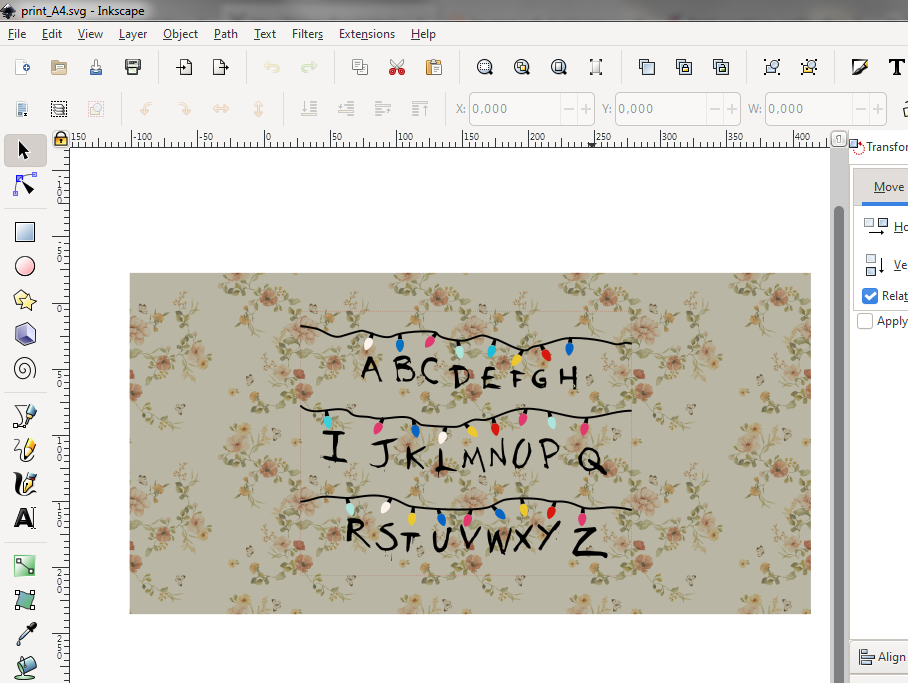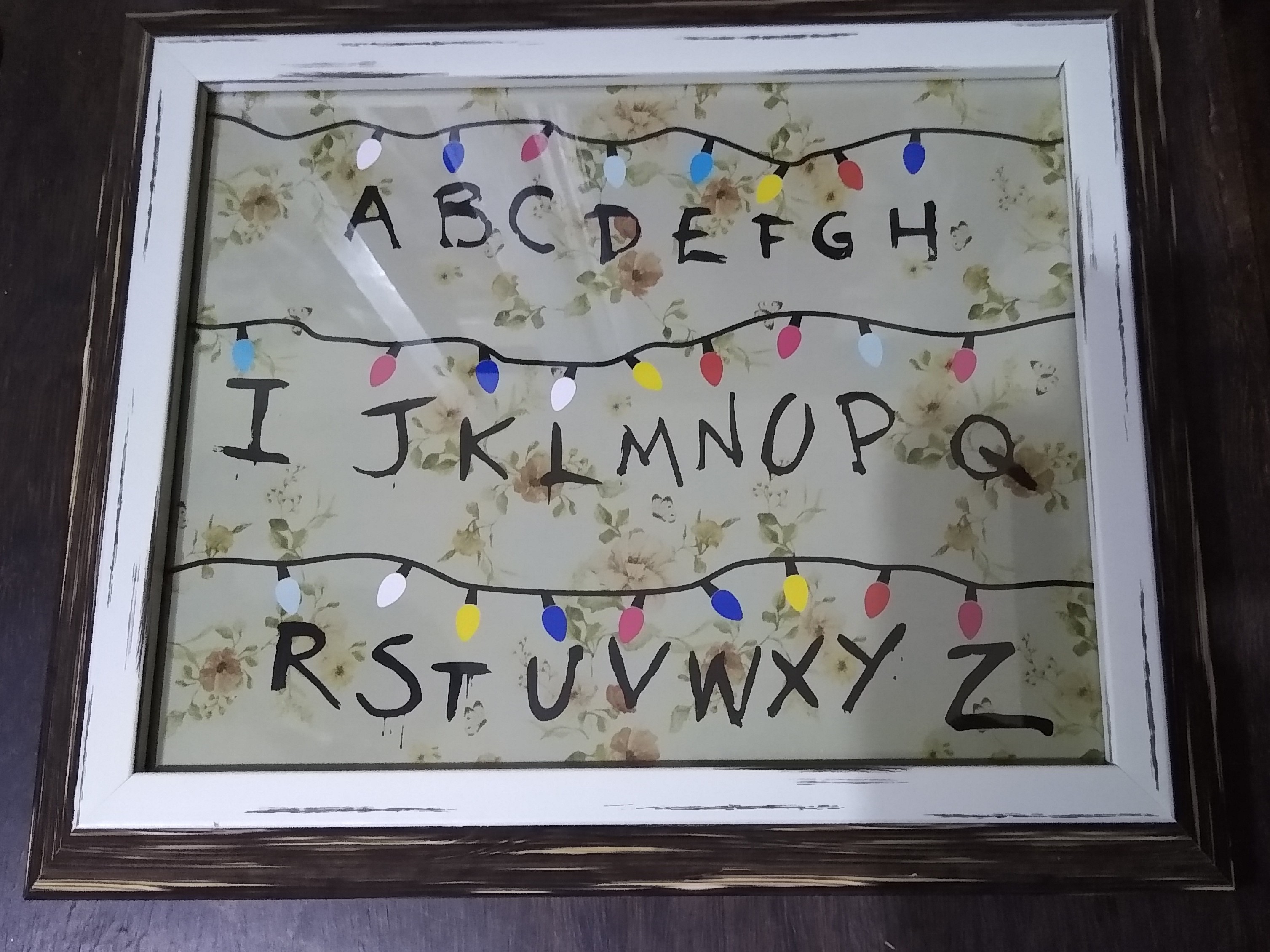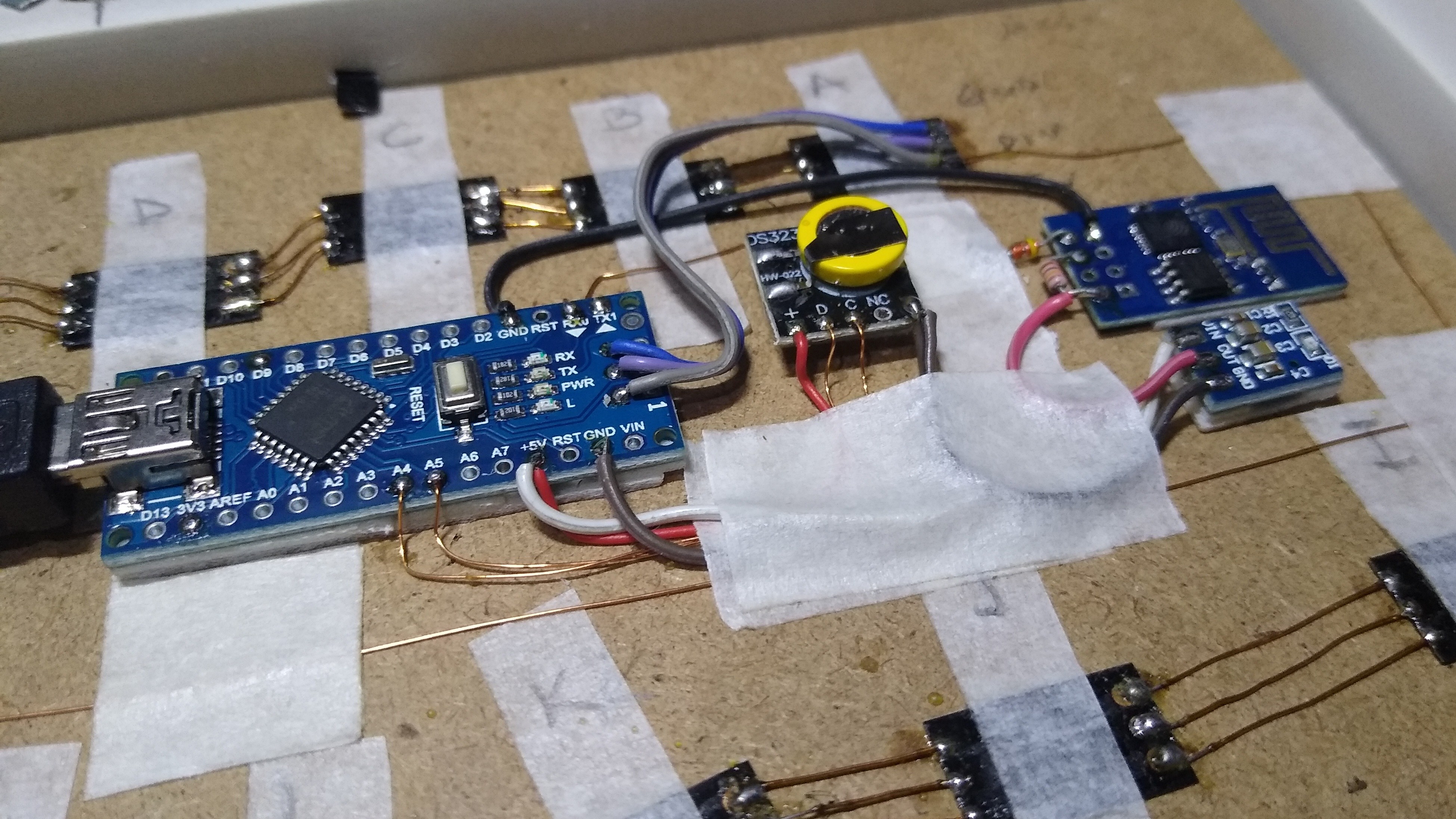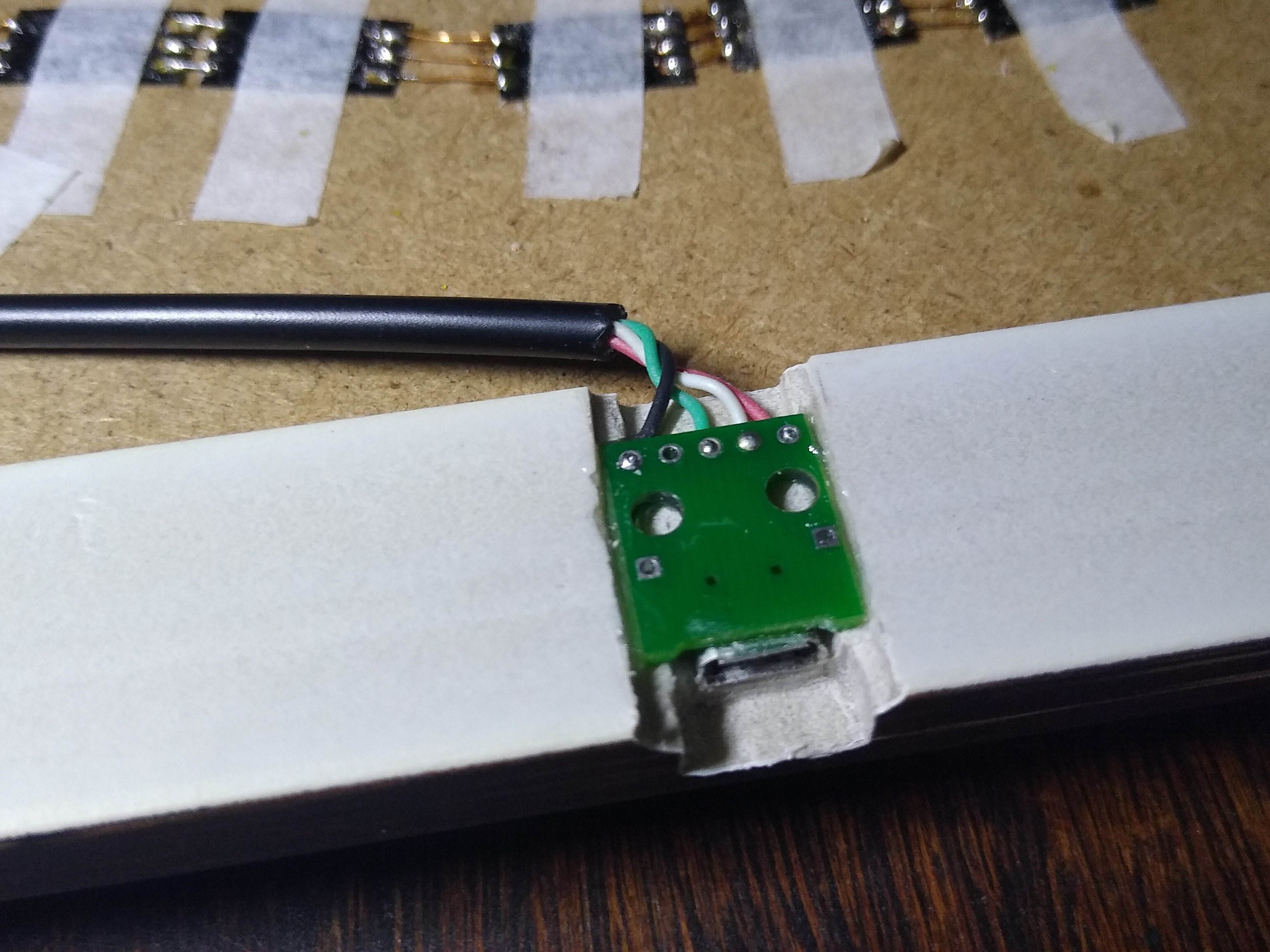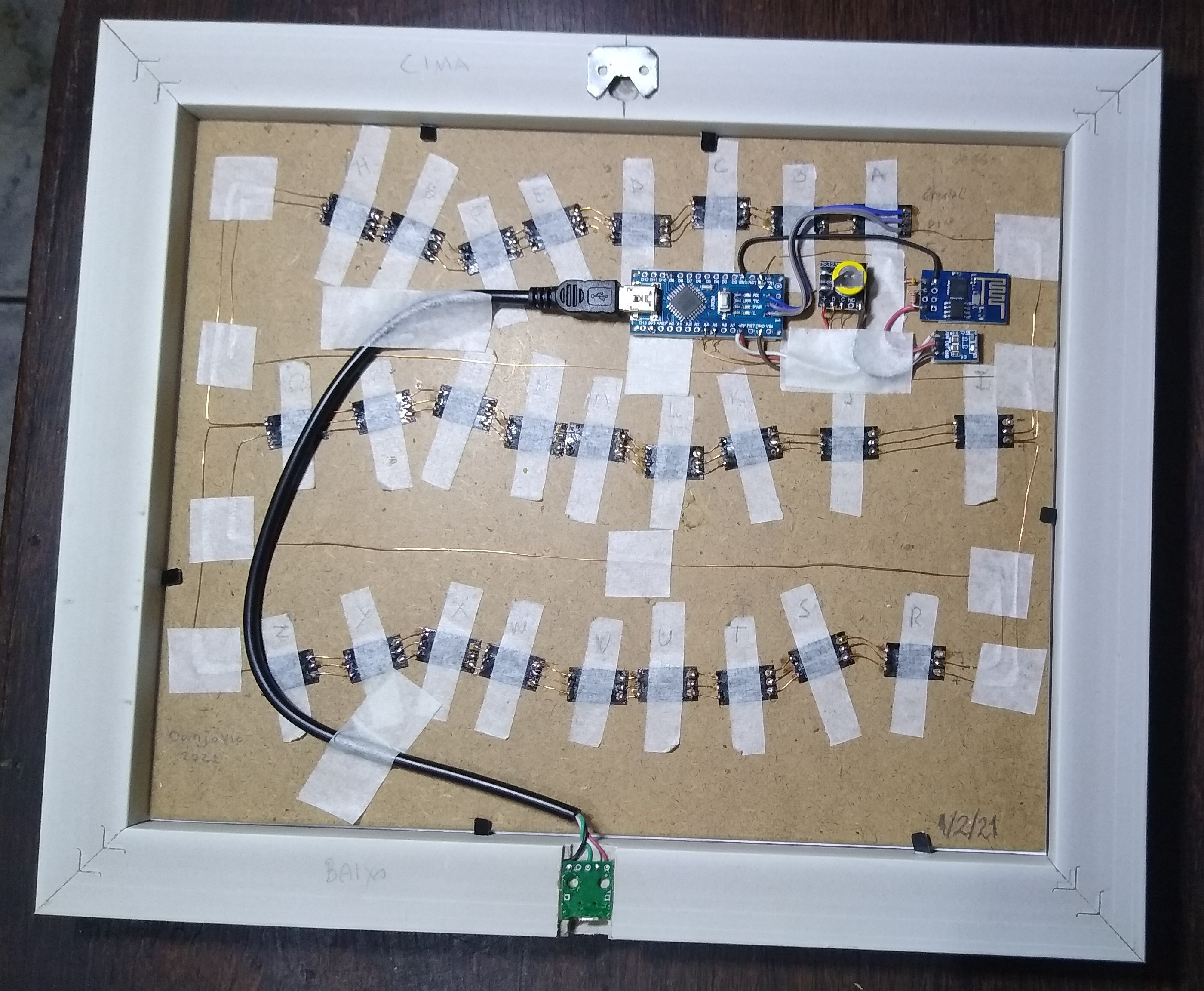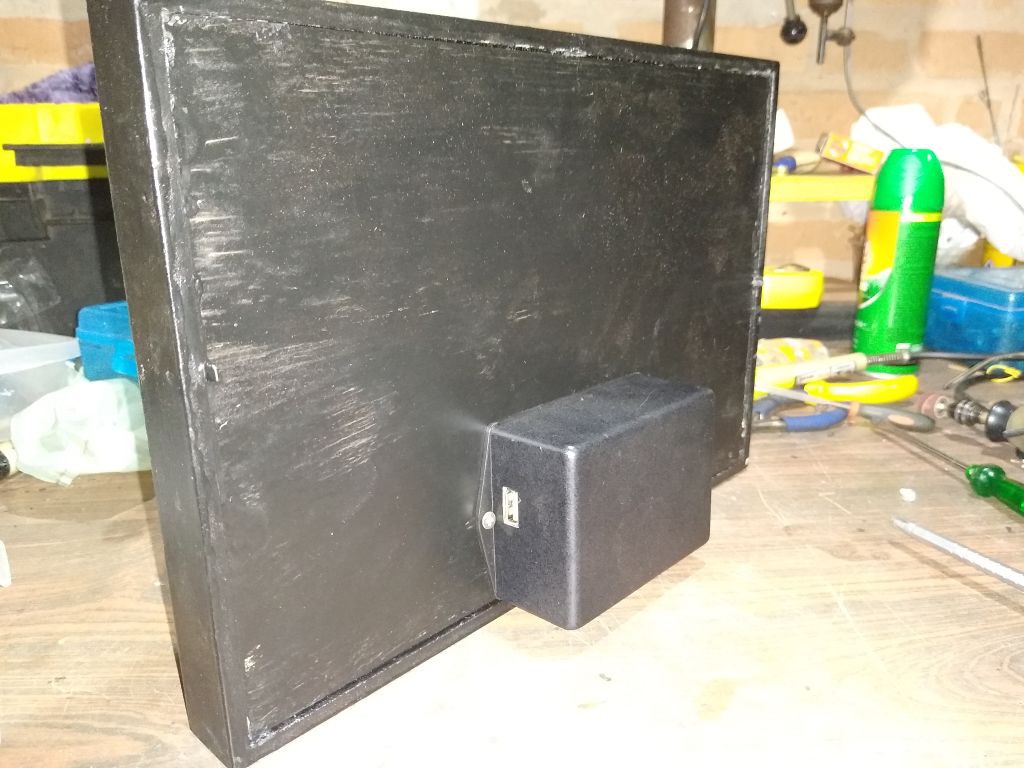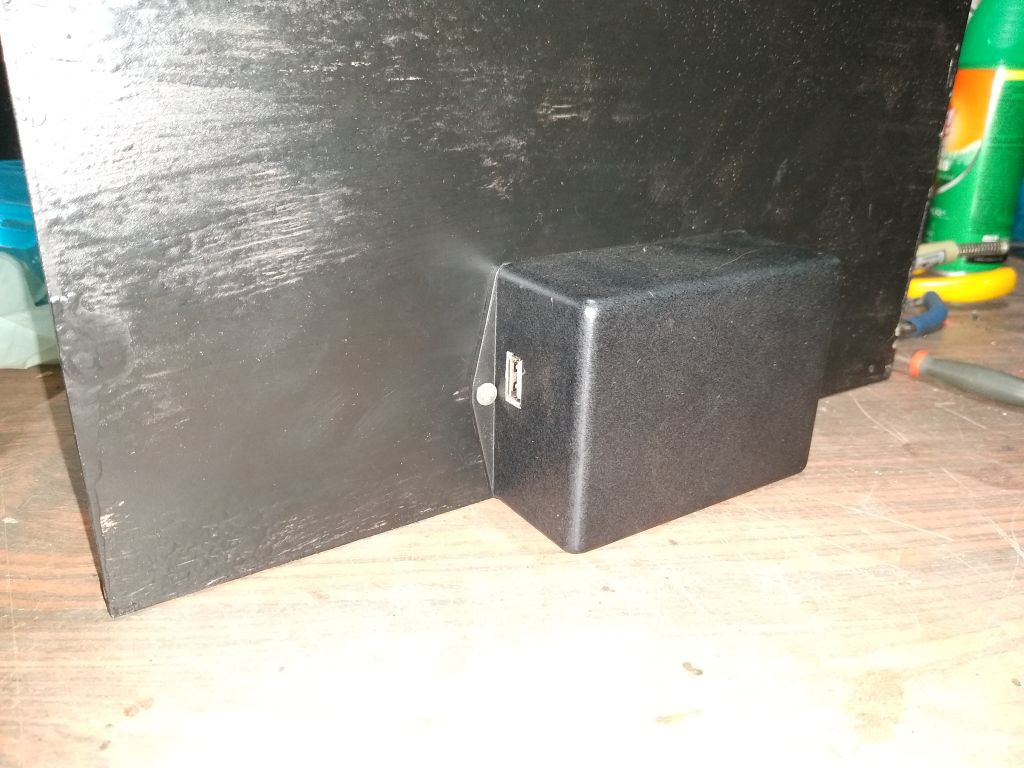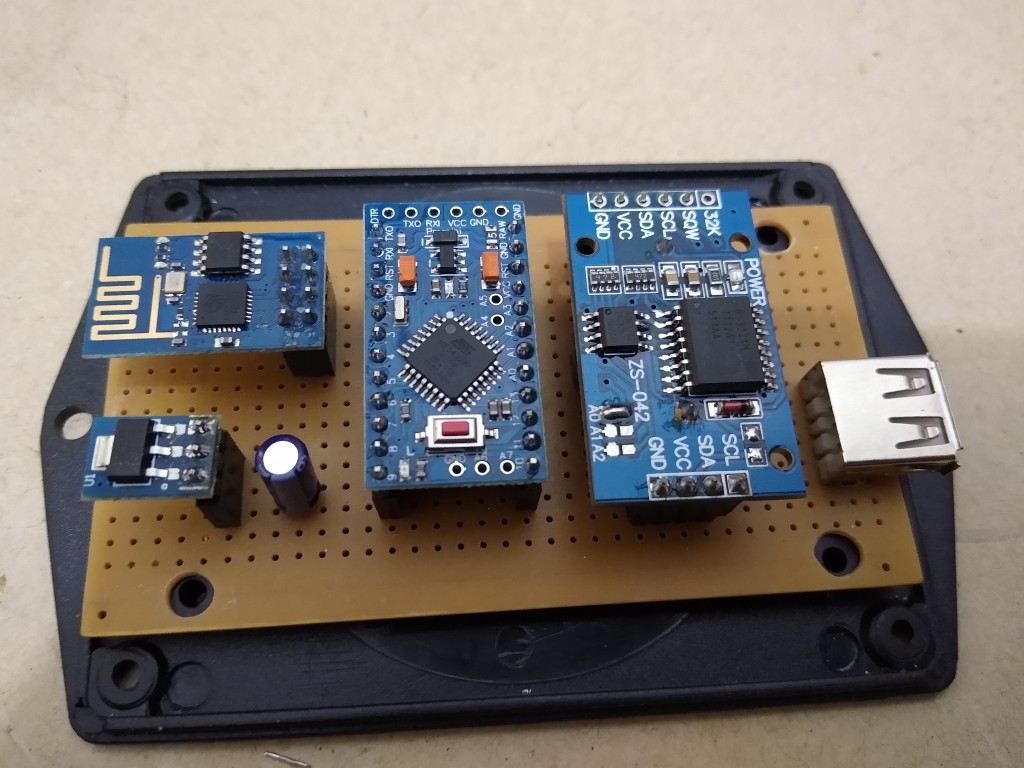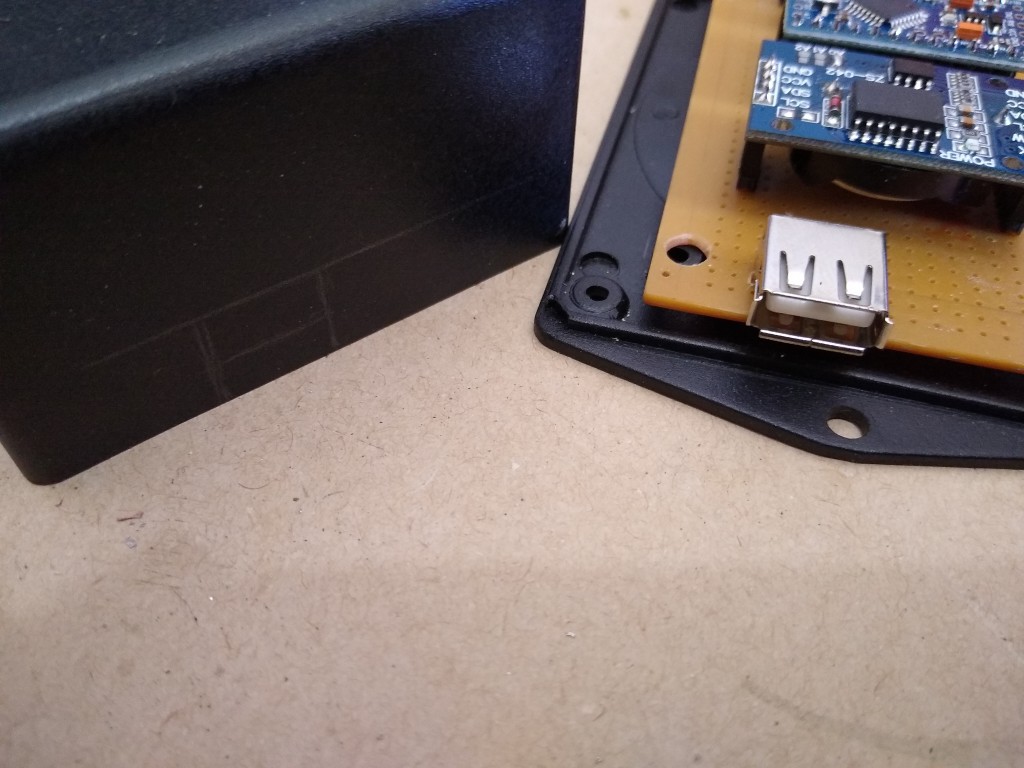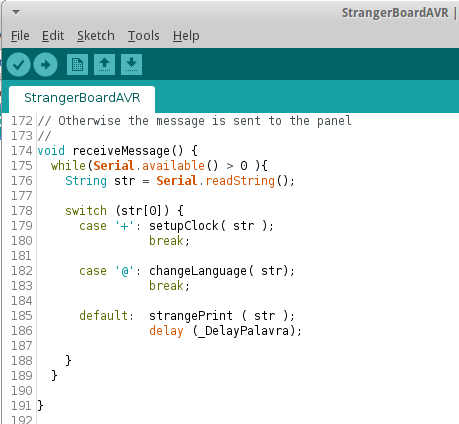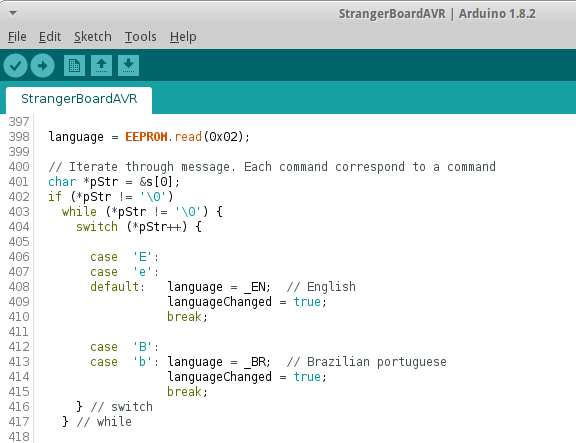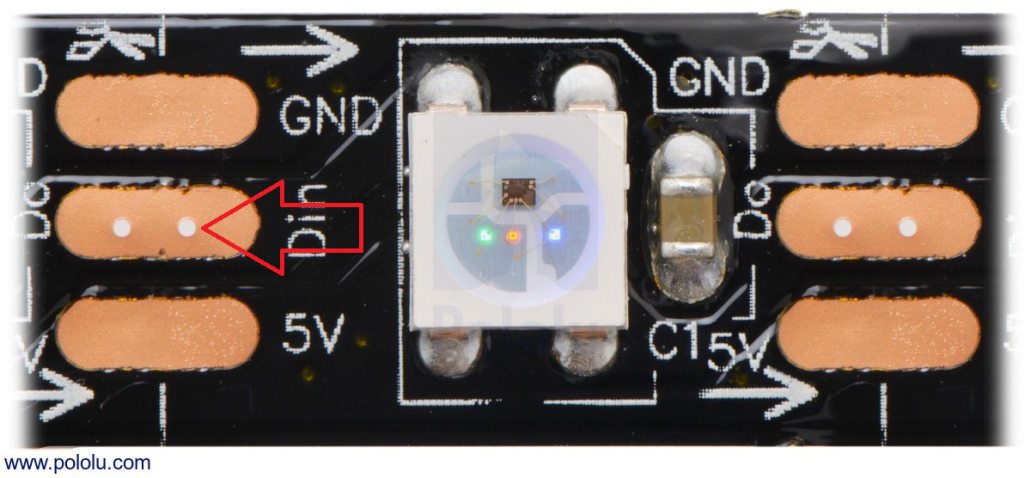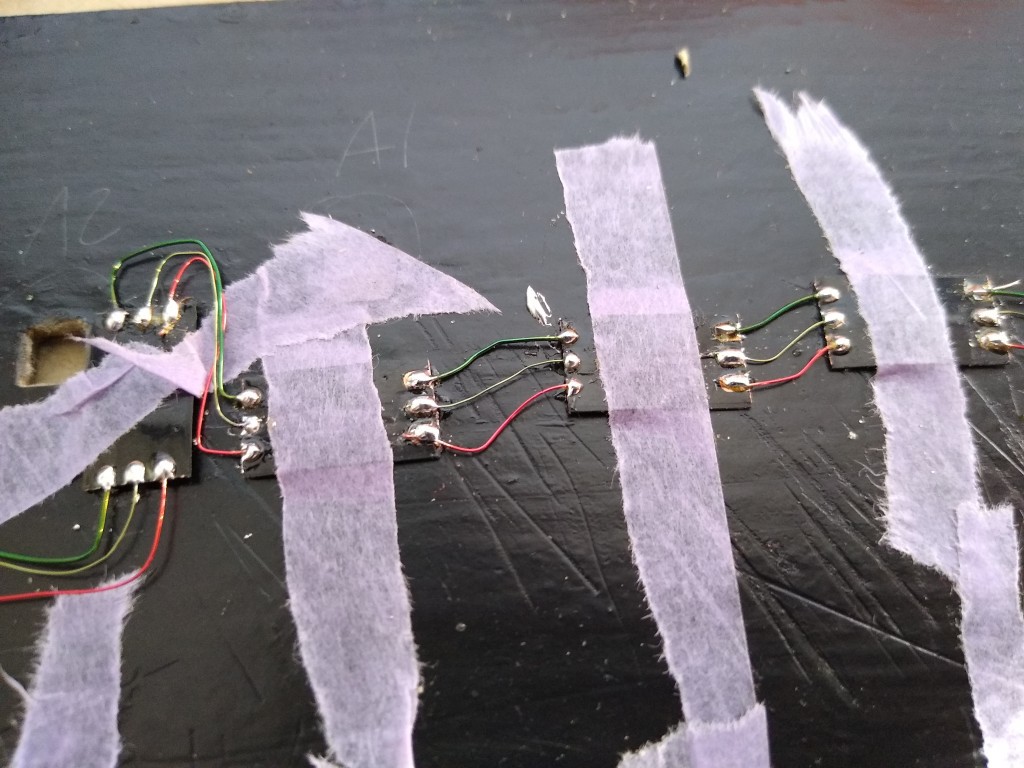-
Artwork available
08/21/2021 at 15:23 • 0 commentsThe artwork is available at files section for this project (link).
-
Second Unit
08/21/2021 at 15:17 • 0 commentsI have made a second unit to be hung on the wall. I have bought a 20 x 25 cm photo frame, and this time the art was printed on a professional print shop over 90 gram gloss paper.
![]()
The board modules are thin enough to fit on the rear side of the frame and they were fixed in place using (double sided) mounting tape.![]()
The device is powered by a Mini-USB connector module fixed on the lower side of the frame.![]()
The rear was covered by a layer of cardboard (no picture, unfortunately). Nevertheless here's a full picture of the assembly. Most of the wiring is done using enameled wire
![]()
It was done in February 2020 but only now I remembered to upload the pictures.
-
Clock Function Demo
12/17/2019 at 10:33 • 0 commentsHere's a couple of videos I made do demonstrate the clock function. First one is in English
"Hello Hackaday, it is Sixteen to Nine" (08:44)
And the second one is in Portuguese
"Olá Hackaday, Oito e quarenta e sete" (08:47)
On both videos a message has been sent through wifi right after the last minute has finished to flash, but the time function repeats every minute.
The language can be switched by issuing the command @e for English or @b for Portuguese (Brazilian)
-
Finishing the case
09/18/2019 at 02:42 • 0 commentsThe box that enclosures the circuit was attached to the rear of the case
![]()
![]()
Three wires connect the circuit box to the Neopixel LEDs inside the board.![]()
-
BOX and PCB
09/14/2019 at 05:20 • 0 commentsThe modules were laid out on a perfboad.
![]()
The box that was choose to enclosure the board is a Patola PB-107. The flanges on the box will be handy to attach it to the rear of the board, helping to hold it standing.
![]()
The box will receive a cut to pass through the USB A connector to power the board
![]()
-
Multilanguage support
09/14/2019 at 05:04 • 0 commentsAdded the command '@' to change the language.
![]()
So far English (@E) and Brazilian Portuguese (@B) are supported.
![]()
The spell time routine has written from scratch to support Brazilian Portuguese. Other languages will probably require an specific spelling routine due to differences in the structure of each language.
![]()
-
Learning from the fails
09/10/2019 at 04:37 • 0 commentsSo far I have stumbled upon two problems:
- The ESP-01 did not produced a stable signal to drive the neopixels either using the Adafruit library or the library that uses the serial port. That is the reason why I have added the Arduino board.
- The Data In lane of the neopixel strip that I have bought is certainly on the component side. I haven' t notice the importance of the via on the strip until It was too late an I had cut all the pixels apart. On the image below the vias can be clearly seen.
![]()
As I have soldered all my LEDs from back It was necessary to change the connection on 4 of them to the other side. As none of them presented problem in the DOUT lane I suppose that in my strip the DOUT was on the solder side (or both).
![]()
-
Brief video
09/10/2019 at 04:14 • 0 commentsA brief video of the prototype
 danjovic
danjovic